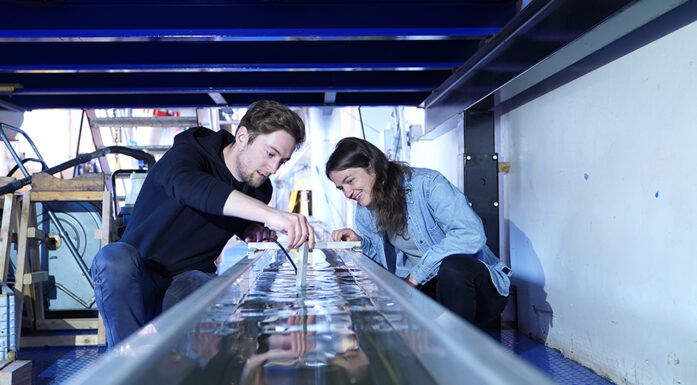The hydrogen race is putting Norwegian competetiveness on the line
Norwegian hydrogen research laboratories have recently been celebrating breakthroughs that can help heavy industry to achieve climate neutrality. But current Norwegian government policy means that these findings will most likely only benefit our competitors.
The EU and USA are currently investing heavily in nature’s smallest element hydrogen, now seen as the cure for one of the more persistent ailments affecting our planet. In these countries, the public authorities have concluded that the production and use of hydrogen is essential to ensuring that some key, and until now fossil-dependent, industries can achieve climate neutrality.
This idea is also being acknowledged by politicians here in Norway. It has also been reported this year that Norway and Germany will be working in partnership to secure Germany large-scale supplies of Norwegian-made hydrogen.
However, it is an unfortunate truth that at present there are no clear plans for making this hydrogen available for use here in Norway.
Tough balancing acts
The authorities in Brussels and Washington have introduced support schemes and subsidies designed to reduce the risk to companies looking to transition from the fossil to a new hydrogen era – within the boundaries of the EU and USA respectively.
The Confederation of Norwegian Enterprise (NHO) and the Confederation of Norwegian Trade Unions (LO) both want to see the same thing happen here in Norway. To date, the government’s response has consisted of state loan guarantees, public investment and innovation subsidies, including those granted via the EU’s Innovation Fund.
At the same time, a recent study commissioned by the Norwegian Ministry of Petroleum and Energy has shown that the demand for scarce resources such as renewable energy, land area and labour applies as equally to hydrogen production as it does to battery factories, electrification of the continental shelf infrastructure and other ‘green’ initiatives. So, we are all faced with some tough balancing acts.
Call the midwife!
As a hydrogen researcher, I believe it would be sensible for the state to form a partnership with Norwegian industry aimed at easing the birth pains of the new hydrogen sector. There are two reasons for this:
- Firstly, Norway has major industrial companies, including smelting plants, fertiliser and plastics manufacturers, all of which will struggle to be competitive in their principal market, the EU, if they continue to emit CO2.
- Secondly, Norway operates with a healthy supply sector and possesses high levels of expertise in the production of hydrogen, as well as its safe and effective storage, transport and use.
Research breakthroughs in these fields have recently been made in Norway. However, without a comprehensive plan and a system of transition subsidies fuelled by a massive commitment to hydrogen by the state, the only beneficiaries of these research results will be foreign manufacturers.
If Norway fails to act, we will be turning our backs on an opportunity to become a major supplier of know-how and technology to the hydrogen era, and in doing so will lose the jobs and export revenues that this opportunity will provide.
Partners in decarbonisation
Last year, the prestigious periodical Nature published an article setting out what hydrogen can, and cannot, contribute to climate change mitigation.
One of Nature’s sources argues that the most important thing is that hydrogen will put the industrial, electricity, transport and construction sectors collectively in a position to throw off their dependency on fossil fuels. Moreover, a collective approach will be less expensive than each sector seeking to identify separate decarbonisation strategies in isolation.
The idea of a joint partnership forms the basis for plans surrounding the ‘Hydrogen Valleys’ initiative here in Norway, involving a joint boost from the public authorities, researchers and businesses to promote the regional exploitation of hydrogen. Fifteen companies based in Mid-Norway have signed up to the project under the supervision of SINTEF and the Renergy renewable energy cluster.
Predictable markets
Hydrogen can be used both as a factor input to industrial processes and as a fuel. But if this idea is to take off in Norway, the industrial and shipping sectors must be able to procure hydrogen at an affordable price.
The technological breakthroughs made in Norway may help to reduce the price differences between hydrogen and fossil fuel alternatives and in doing so widen hydrogen’s scope of application. There are good examples of what the state and industry can achieve as part of a research collaboration that we ought to be seeing more of.
We also need a predictable market for hydrogen in order to ensure that our domestic industries can reap the benefits of research results such as the following:
- A CO2-free pathway to the steel alloy element manganese: Steel manufacture is one of the industrial sector’s largest sources of CO2 emissions. Led by Sweden, steel manufacturers are now investing in the use of hydrogen for the manufacture of emissions-free iron. SINTEF has discovered that something similar can be achieved with the alloy element manganese, provided that sufficient energy is supplied to enable the hydrogen molecules to go into solution. This work is still at an early stage, but researchers working in this field also believe that other metals could be produced in this way.
- Efficient hydrogen separation and CO2 capture ‘all in one go’: A study published in the prestigious journal Science has shown that this is entirely possible. The Norwegian company CoorsTek Membrane Sciences, the University of Oslo and SINTEF have together assisted in the production of a membrane-based reactor that has now been tested at industrial scale. The reactor enables the efficient separation of hydrogen from natural gas, biogas or ammonia, while at the same time capturing the CO2 released, which can then be stored.
- Energy-efficient water splitting: Using a technology developed by SINTEF, the Norwegian company Hystar has constructed a new type of so-called PEM electrolyser that can split water into hydrogen and oxygen. An innovative design makes the production of green hydrogen much less energy demanding and thus also less expensive.
The future of heavy industry at stake
The Norwegian state has granted significant amounts of funding in the hope of establishing complete value chains. Funding recipients have included a group of five projects dedicated to form a ‘green hydrogen hub’, as well as seven vessel propulsion systems designed to use either hydrogen or ammonia.
If Norway is to keep pace with global developments in the field of hydrogen, and thus also maintain the competitiveness of its heavy industry in the years ahead, we ought to be doing more to exploit the advantages provided to us by the supplier and research sectors.
This article was first published in the financial daily Dagens Næringsliv on 20 July 2023 and is reproduced here with the permission of the paper.





